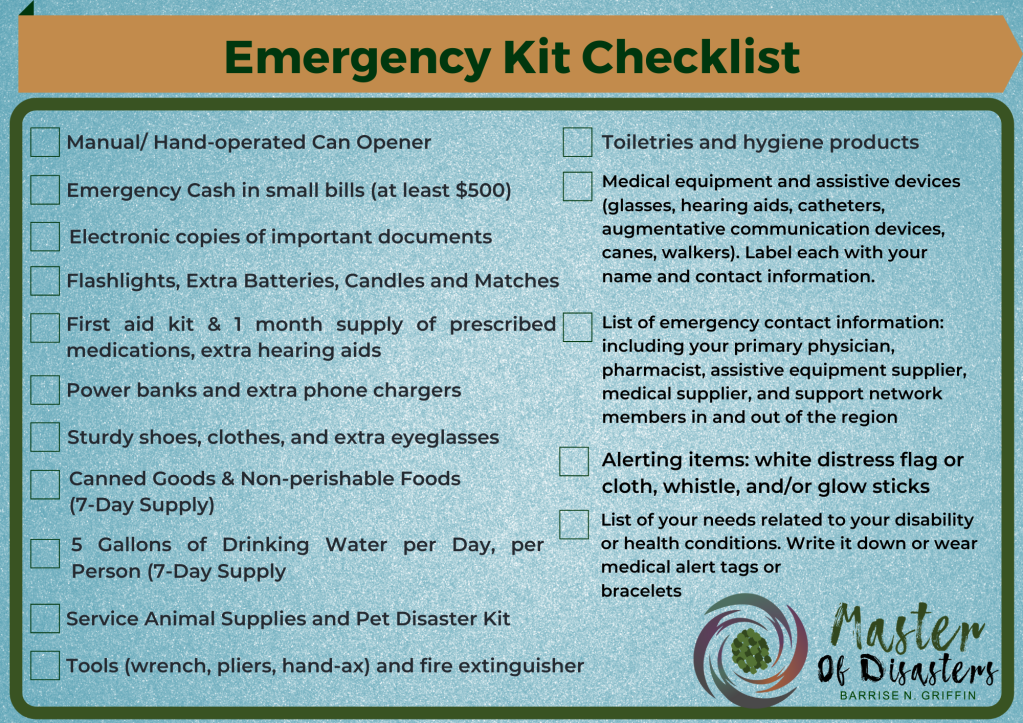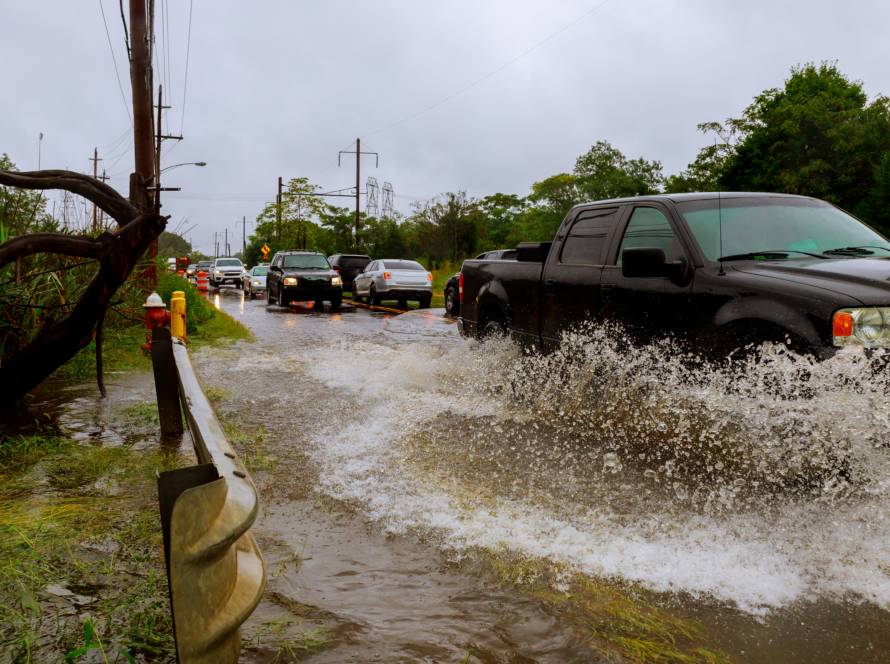Being prepared for any emergency, or disaster event means planning ahead. You must consider your daily activities, routine, and immediate essentials, and plan out how a disaster event would change how you get things done and your resources. In the event of a hurricane, or other life-disrupting hazard, it will be beneficial to have an Emergency Kit or Go Bag on hand in case you need to evacuate or are unable to get necessary resources like food and water right away.

Special Considerations
(Tips taken from https://www.ready.gov/disability and https://www.brainline.org/article/disaster-readiness-tips-people-mobility-disabilities)
Tips for People Who are Deaf or Hard of Hearing
- A weather radio (with text display and a flashing alert)
- Extra hearing-aid batteries
- Pen and paper (in case you have to communicate with someone who does not know sign language)
Tips for People Who are Blind or Have Low Vision
- Mark emergency supplies with Braille labels or large print. Keep a list of your emergency supplies and where you bought them on a portable flash drive or make an audio file that is kept in a safe place where you can access it.
- Keep communication devices for your particular needs, such as a Braille or deaf-blind communications device as part of your emergency supply kit.
Tips for People with Speech Disability
- If you use an augmentative communications device or other assistive technologies, plan how you will evacuate with the devices or how you will replace equipment if it is lost or destroyed. Keep model information and note where the equipment came from (Medicaid, Medicare, private insurance, etc.).
- Plan how you will communicate with others if your equipment is not working, including laminated cards with phrases and/or pictograms.
Tips for People with a Mobility Disability
- If you use a power wheelchair, have a lightweight manual chair available as a backup if possible. Know the size and weight of your wheelchair in addition to whether or not it is collapsible, in case it has to be transported.
- Show others how to operate your wheelchair.
- Purchase an extra battery for a power wheelchair or other battery-operated medical or assistive technology devices. If you can’t purchase an extra battery, find out what agencies, organisations or local charitable groups can help you buy one. Keep extra batteries on a trickle charger at all times.
- Consider keeping a patch kit or can of sealant for flat tires and/or extra inner tube if the wheelchair or scooter is not puncture proof.
- Keep an extra mobility device such as a cane or walker if you use one.
- Keep a portable air pump for wheelchair tires.
- If you use a seat cushion to protect your skin or maintain your balance and you must evacuate, have an extra cushion to take with you.
Tips for Individuals with Sensory Disabilities (including autism spectrum disorder)
- Handheld electronic devices (loaded with movies and games)
- Spare chargers
- Sheets and twine or a small pop up tent (to decrease visual stimulation in a busy room or to provide instant privacy)
- Headphones (to decrease auditory distractions)
- Comfort snacks
Additional Items
- At least a week-long supply of prescription medicines
- A list of all medications, dosage and any allergies
- Extra eyeglasses
- Extra hearing aid batteries
- Extra wheelchair batteries (or a manual wheelchair if possible)
- Oxygen
- A list of the style and serial number of medical devices (include special instructions for operating your equipment if needed)
- Copies of medical insurance and Medicare cards
- Contact information for doctors, relatives or friends who should be notified if you are hurt
- Pet food, extra water, collar with ID tag, medical records and other supplies for your service animal (Check out our article on Disaster Tips for Pets)
Evacuation
Your first option and plan should always be to go to family or friends first; they can accommodate you, your service animal and pets, and help you be most comfortable in a stressful situation.
Keep in mind that not all public shelters are handicap accessible, or can provide personal health care or assistance with activities of daily living, or e. If you require the care of a personal attendant and choose to go to a shelter, bring the attendant with you.
- Listen to the radio or television for the location of emergency shelters. Note those that are accessible to people with physical disabilities and those that have other disability friendly assistance features.
- Wear appropriate clothing such as sturdy shoes.
- Take your emergency kit or go bag.
- Inform members of your support network and out-of-town contact of your location and status.



